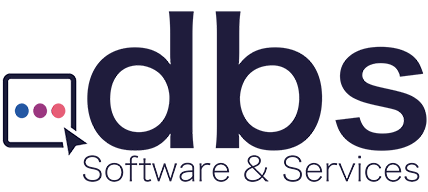
Document Indexing and Searchability: The Pillars of a Document Management System
Look under the hood of a document management system, and you’ll find document indexing at its core.
The great promise of digital transformation does not lie merely in the storage of vast amounts of information digitally. It lies in what the digital layer enables, that the physical layer never could. In traditional filing rooms, files were indexed categorically, but with innumerable limitations. Limitations that only become apparent now that we know what’s possible.
Let’s get the basics out of the way first.
What is document indexing?
Document indexing is a system of information management that identifies and logs a number of specific attributes of a document in order to make its retrieval smoother, faster and easier. In other words, a well designed document indexing improves the retrieval and searchability of documents within a document management system.
Depending on the use case, indexing data points or parameters may include a wide range of descriptive information and metadata. For example documents in the accounts department may be indexed by invoice numbers, vendor names, date of issue etc. Similarly files in the HR function of an organization may be indexed by employee name, social security number, and other such relevant information. The choice of indexing data points is usually determined by the likelihood of search queries raised by the end user.
The importance of document indexing
Scanning and capturing paper documents is merely the first step on the long road to digital transformation. The value of a digital repository of documents lies in the ease with which a user can retrieve the information contained within. Document indexing is therefore a critical tool that makes a digital transformation truly powerful, and it does so in the following ways.
Saves Time
83% of employees must recreate existing documents since they can’t find them in their company network. That’s a startling statistic from The 2019 Intelligent Information Management Benchmark report.
In addition to recreating lost documents, the amount of time lost in retrieving information itself compounds invisibly across the organization. Intelligently designed document indexing is vital to harnessing digitized data. And it reflects in the number of man-hours saved.
Saves Money
The time lost in retrieval and recreation of lost documents itself translates into money. However, the risk of losing an important document can itself prove costly. Especially when compared to traditional paper documentation processes, digitally well indexed documentation lower operating costs and mitigate the unforeseeable risks of human error.
Eases Compliance
Most industries have a layer of strict regulatory and legal compliance requirements that must be met by organizations. Since it doesn’t add to operating productivity directly, it’s sometimes hard to recognize compliance as a cost that could weigh any organization down. In industries like healthcare, banking and financial services and law, compliance is an existential burden to the organization.
Document indexing eases both archival and retrieval processes of documents. Coupled with a modern document management system, the index populated with metadata is valuable to capture reliable audit trails. Document indexing is therefore necessary to ease the processes of compliance.
Mining for actionable insights
Imagine the amount of unstructured information generated at the scale of an enterprise. The value of data lies not just in the data itself, but also the relationships between datasets. Functionally, a document indexing system organizes and makes sense of unstructured information spread across various file types and formats readily. However, an intelligent document indexing system also forces the relationships between disparate datasets to become apparent. And therein lies a goldmine of analytical information that could reveal transformative actionable insights.
Methods of document indexing
Accuracy of document indexing is a key determinant of ease of searchability and retrievability. Accuracy here broadly refers to the correctness of the indexing parameters captured as well as consistency of indexing parameters across the information system.
In simpler words:
Are the most relevant indexing parameters being captured?
Is the indexing information captured correctly?
The goal is to minimize exceptions. Based on these factors, methods of document indexing can be broadly classified into three.
Double key indexing
Double key indexing is where two keying operators, i.e. machines or humans that enter the data, independently into the index fields. The two fields are then matched. In case of any discrepancy, the indexing parameter is cross checked with the source document to find the accurate value.
Sometimes the discrepancies are resolved by a third operator known as an arbiter. Alternatively this method could be applied with an optical character recognition and a single keying operator who verifies if the captured index is accurate.
Full-text indexing
Full text indexing, indexes every word and groups of words or phrases within each document into a master word list with pointers to every instance of the word appearing in documents or pages. Information then becomes retrievable by simply string searching text within documents.
While this seems like a holistic approach to indexing, the search user might find it more tedious to locate the information of exact relevance because of a problem of plenty. Also, since this creates a much larger index database, it is constrained by the system memory.
Variable lookup indexing
Variable lookup indexing uses multiple existing indexing databases to intelligently populate index fields. Not only does this make for a faster indexing process, but it also minimizes exceptions to a great degree by combining multiple levels of automated database lookups along with manual review.
Six things to consider for a sound document indexing strategy
The design of the indexing system includes file naming, folder structure, tagging, database relationships, indexing fields and indexing parameters. Often the design must be modular between departments. The indexing requirements of the HR department will vary from say Accounts. This is the reason why you should ensure you have a system that can support multiple databases.
The fruits of document indexing lie in the ease of searchability. Searchability though is a wider term than immediately apparent.
“How quickly and easily can the user retrieve or obtain the most relevant information that is sought?” – This is the question to keep in mind while coming up with an indexing strategy.
- Search Terms: Tailor your indexing strategy to suit the ease of the end user that performs the search operation. The users search terms will factor into the indexing parameters in the design.
- Sorting: Displaying search results without sorting for relevance is like kicking the can down the road. The end user must be able to locate the relevant information with the minimum number of actions or interventions.
- Filtering: The end user must be able to filter search results using additional indexing parameters if necessary. Which means, capturing those parameters must be designed from the beginning.
- Memory Constraints: The speed of searchability is often constrained by the system’s memory and architecture. Larger indexing databases can take longer to mine and load.
- Legacy Cost: The cost of transitioning from a legacy file indexing system to a new one can sometimes be significant. Care must be taken to account for it so as to make the smoothest possible transition.
- Iterate and Adapt: The document indexing system must be designed to evolve while being responsive to emerging challenges of the end user. The best indexing strategy is one that can improve with time.
Document indexing in a document management system.
It should be quite clear that document indexing is at the core of any document management system. In fact, the features and functionality of a document management system depend first and foremost on the efficacy of document indexing. Therefore, pay special attention to the document indexing methods and strategies used in design, while choosing a document management system.
Among reputable document management systems, Tessi Docubase® works with organizations and businesses to design a custom document indexing strategy tailored to enhance the overall information management in a result oriented way.
Digital transformation is a wise move. Let’s do it right.

dbs Software & Services (dbs) is a long-standing provider of document management and process automation solutions for education and business, and the exclusive provider of Tessi Docubase® in North America.
Tessi Docubase® is an enterprise-grade modular, secure, and easy-to-use document management system that seamlessly integrates with Business Information Systems. Its secure architecture and a broad range of features make it the perfect solution for a wide range of enterprises and use cases.
dbs LiveForms, is a low-code Business Process Automation platform. Its sole focus is simplifying complex processes by automating repetitive steps – from data capture to alerts, notifications, email confirmations, and everything in between quickly, without involving a programmer.
dbs eSign is a cloud-based electronic signature solution that allows users to manage the signing process for a document, from upload to signing and sealing, from any mobile device or computer.

Leave A Comment